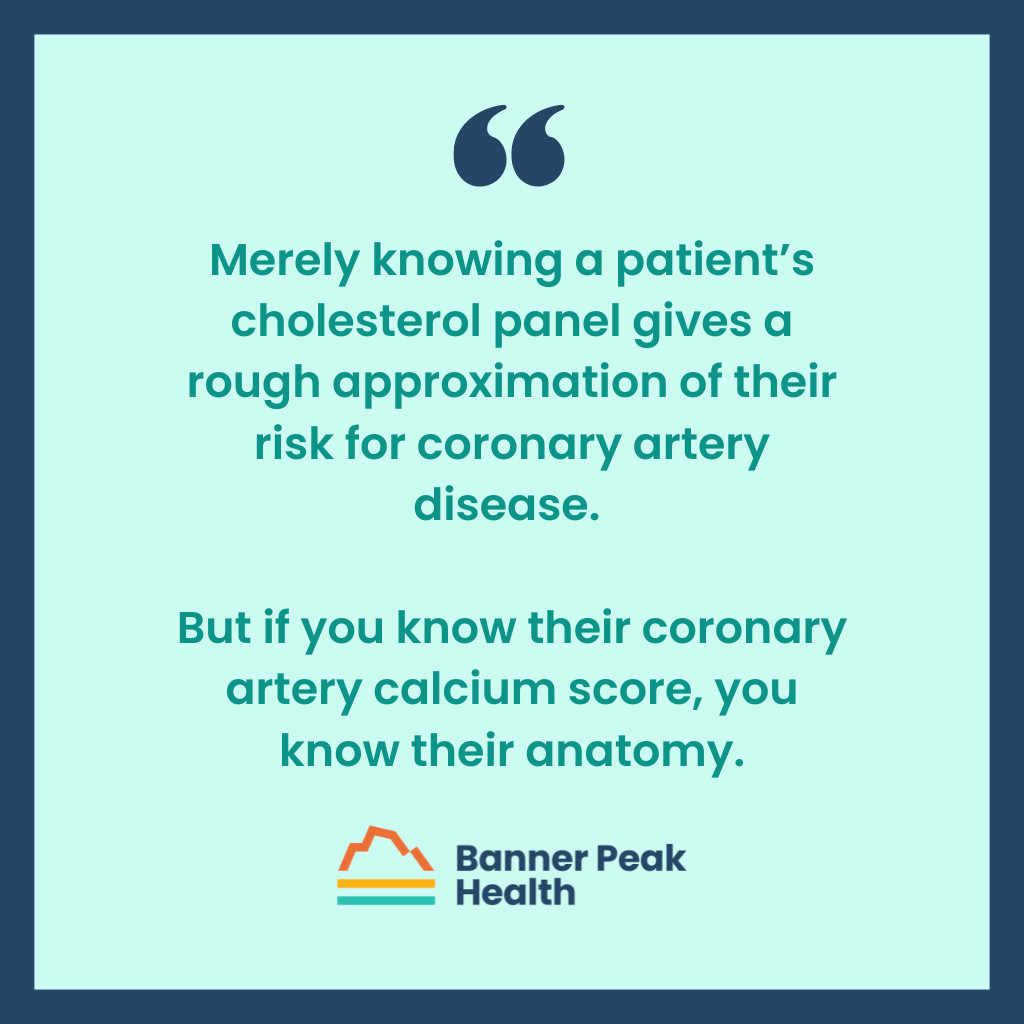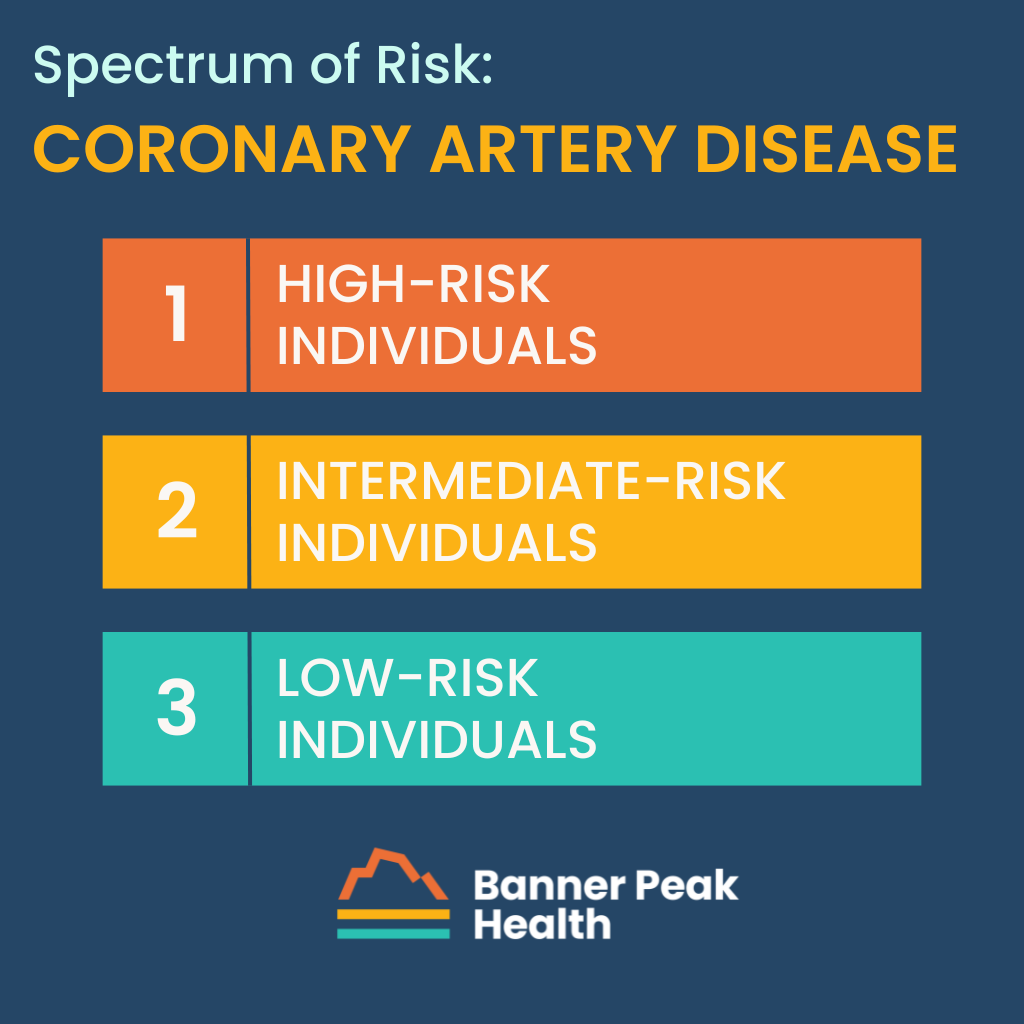As an internist, I never want to be surprised.
In my line of work, surprises are almost universally bad. I want to know as much as possible about my patients so we can work together to reduce their risk of bad outcomes.
In our society, the greatest loss of life is attributable to cardiovascular disease manifested by heart disease and strokes. We need to understand, with the greatest accuracy possible, the risk each individual has for a bad cardiovascular outcome.
Since 1948, the Framingham Heart Study has informed us about the risk factors for coronary artery disease, with a prominent role of diabetes and cigarette smoking, and an understanding of cholesterol and its impact on risk.
We in the medical community need to know our patients’ cholesterol panels to help us loosely infer potential risk. But in the last decade, we’ve developed a safe, accurate, and simple method for understanding the actual coronary artery disease burden of an individual.
We can now move from a statistical probability to an anatomic reality. This is possible thanks to the coronary artery calcium (CAC) score.
What Is a Coronary Artery Calcium Score?
Atherosclerosis, or the hardening of the arteries, is not a passive, chemical deposition process analogous to the clogging of pipes in your home. Rather, it reflects an active biological process created by ongoing inflammation in the lining of our blood vessels.
Many studies have proven that this inflammatory process can create calcification, the laying down of calcium within blood vessels in a fashion that is highly correlative with the total amount of plaque and blockage within the arteries.
Calcium has a unique property. It’s radiopaque (meaning it absorbs X-rays) and can be imaged very clearly through a CT scan (a three-dimensional X-ray).
Because the coronary artery calcium (CAC) score is a screening test, a special protocol has been developed which uses a 10th of the radiation of a traditional chest CT. This allows us to quantify how much calcium we see in an individual’s coronary arteries.
The quantity of calcium is measured as an Agatston score and is also given as a percentile rank for an individual of their age and gender.
The coronary artery calcium score is so helpful because it’s an early warning system — the best available. It can detect inflammation and calcium deposition when it’s only in the lining of blood vessels before there’s any blockage of blood flow.
For example, an individual with an Agatston score of 104 and a percentile rank of 90% would have more calcium in his or her arteries than 90% of their age- and gender-matched peers. This alerts us that there is a real anatomical risk of this individual’s arteries leading to a bad outcome.
Other tests, like the treadmill test, are not as accurate for detecting early disease. In fact, the treadmill test requires at least 70% blockage in an artery to register a result. The CAC score gives us a much earlier warning, before any blockage has occurred, and enables us to take appropriate steps to prevent a blockage from ever happening.
Who Should Get a CAC Score?
CAC scores help us better understand individuals who are at intermediate risk for coronary artery disease and may need more aggressive treatment than they’re currently receiving.
On the spectrum of risk, there are three categories:
- High-risk individuals who have already manifested coronary artery disease.
- Intermediate-risk individuals with no manifested coronary artery disease, but at least one risk factor including but not limited to: men over the age of 50 or women over the age of 60, family history of heart disease, high blood pressure, cigarette smoking, diabetes, high cholesterol.
- Low-risk individuals, or younger individuals without any existing risk factors.
The intermediate-risk group is quite large. Because cardiovascular disease is the greatest medical threat to this group, which already has additional risk factors, it makes sense to gather information that will help create an effective, personalized risk reduction plan for them.
Why Cholesterol Doesn’t Matter Without a Coronary Artery Calcium Score
Merely knowing a patient’s cholesterol panel gives a rough approximation of their risk for coronary artery disease. But if you know their coronary artery calcium score, you know their anatomy.
For example, a potentially risky, dangerous cholesterol panel in an individual that has shown no evidence of actual calcification or plaque formation is much less worrisome than someone with a “safe” cholesterol panel who has already manifested coronary artery disease as evidenced by their coronary artery calcium score. One person might need aggressive medical management, while the other may not.
Today’s Takeaways
- Be aware that you may be at risk for coronary artery disease. So many people assume it won’t happen to them until it does. Ultimately, it’s the leading cause of death in our society.
- If you have any constellation of risk factors discussed above (male over 50, female over 60, etc.) ask your doctor about getting a CAC score.
Remember: prevention is about identifying and addressing issues before bad outcomes happen. It could happen to you just as easily as anyone else, so talk with your physician before it does.


Barry Rotman, MD
For over 30 years in medicine, Dr. Rotman has dedicated himself to excellence. With patients’ health as his top priority, he opened his own concierge medical practice in 2007 to practice medicine in a way that lets him truly serve their best interests.




